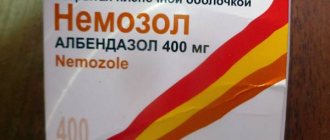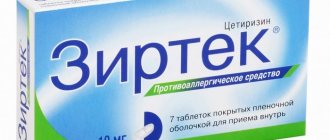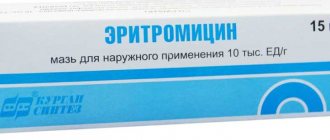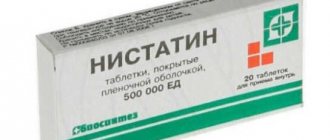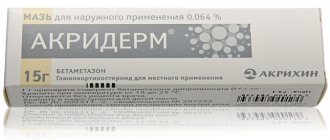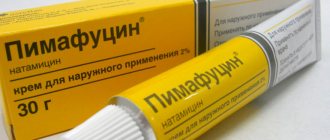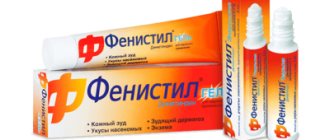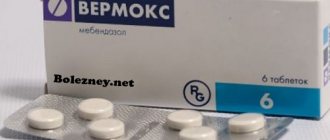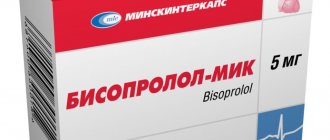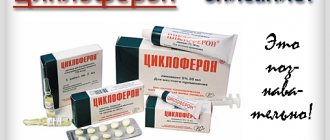Zinc ointment is an over-the-counter dermatological medicine with mild astringent and slight antiseptic properties. It is used for a variety of skin problems, be it minor burns, diaper rash in a baby, or skin irritation from insect bites or contact with poisonous plants. Despite the fact that the modern pharmaceutical industry today offers many drugs that can help with skin diseases, this ointment is in demand. It is distinguished by efficiency and low price. What zinc ointment helps with and how to use it correctly will be discussed in this article.
What are the benefits of zinc ointment?
Zinc ointment has long gained the status of a safe, effective drug with few side effects and contraindications. The main active ingredient is zinc oxide.
Zinc compounds have been used by humans since the earliest periods of civilization. Unfortunately, their dosage forms and composition have not survived to this day. Indian ancient medical reference books, supposedly dating back to 500 BC, mention that it was used to treat eyes and open wounds.
Zinc oxide ointment was used by the ancient Greek physician Dioscorides. Avicenna used this ointment to treat various skin problems.
This compound is widely used in the paint and varnish industry, oil refining industry, for the production of glass and ceramics, car tires, plastics, and paper. The cosmetics industry and veterinary medicine cannot do without it.
Zinc oxide gives the ointment anti-inflammatory, antiseptic, astringent, drying properties and protects the skin from external influences.
It is part of many other, more modern, pharmaceutical ointments, creams, and liniments. The most famous is Lassara paste or salicylic-zinc ointment.
Zinc has many properties, among which are:
Stimulating brain function and maintaining intellectual abilities;
Participation in the synthesis of proteins and nucleic acids;
Promotes the absorption of calcium and phosphorus;
Accelerates the healing of wounds and ulcers;
Helps maintain skin elasticity.
It relieves inflammation and irritation, forms a protective surface layer on the skin.
Effect of the drug
The main active component has an astringent, anti-inflammatory, and antiseptic effect. Zinc oxide, when applied topically to the skin, can destroy a wide range of different bacteria, as it negatively affects the proteins of their cells. Ultimately, this causes the death of microbes. Of course, the drug is not an antibiotic; if the infection process is active, it will be powerless, but it is able to disinfect the surface of the skin.
WE RECOMMEND THE ARTICLE!
Lorista is prescribed in the presence of hypertension - an uncontrolled increase in blood pressure. Read more >>
Other beneficial properties of zinc oxide are based on the following:
- Astringent and healing effect
. The mineral destroys the structure of proteins and amino acids, and a thin film appears on the surface.The skin and mucous membranes under the film are protected and heal faster.
- Anti-inflammatory effect
. Due to a decrease in skin infection and drying, inflammatory processes subside. The deeper layers are not involved in inflammation. - Adsorbent action
. This is especially true for zinc paste. Due to the presence of a large number of powdery substances, the latter absorb harmful elements and decay products of microbes.
Additional components of ointments and pastes are needed not only to give the desired dosage form. They soften the effect of the medicine, preventing excessive drying of the skin and mucous membranes.
What does zinc ointment treat and help with?
According to the annotation for the drug, the ointment is intended for external use only. The anti-inflammatory properties of the ointment make it very effective for various irritations in the form of skin rashes. It stimulates the healing process of wounds, cuts, burns, accelerating the regeneration and restoration of the skin.
This inexpensive remedy helps with:
Sweating not accompanied by bacterial damage;
Herpes simplex virus;
Streptoderma;
Eczema in the acute stage;
Dermatitis;
Trophic ulcers;
Superficial damage to the skin, such as cuts, sores, scratches, burns, etc.;
Bedsores.
In pediatrics, the ointment is used to treat diaper rash, sweat rash, and diaper rash in newborns. Diaper rash in newborn babies is usually associated with high humidity, poor air circulation and prolonged contact with urine or feces. Using diaper ointment prevents skin contact with the irritant.
Sometimes it is used in gynecology to treat inflammatory diseases affecting the vulva and vaginal walls, with erosion of the cervix. Before using this product yourself, you should definitely consult your doctor. The ointment is not directly intended for the treatment of gynecological diseases.
There are recommendations for the use of ointment in the presence of hemorrhoids and fissures. It helps minimize some symptoms and speed up the healing of damaged tissue. But it cannot be the only drug to treat this problem in severe cases.
In cosmetology, it is often used for acne and pimples, skin pigmentation and sun protection. Zinc has skin whitening properties and is included in anti-sun products.
But most often they are recommended to be used from a certain age. Zinc ointment is the only remedy that can be used for newborns for this purpose.
How to use zinc ointment
The official instructions recommend using the ointment 2-3 times a day, applying it to previously cleansed and antiseptic-treated skin.
For herpes
On the first day, the ointment is applied to the affected area pointwise every hour. Then you can apply 3-4 times a day until the rash dries out.
It is allowed to mix the ointment with anti-herpes drugs or apply them alternately.
For hemorrhoids
In the presence of external nodes and cracks, the ointment is applied in a thin layer to the damaged area after thorough cleansing 2-3 times a day. For internal nodes, apply a small amount of ointment to a cotton swab and insert it inside.
For extensive skin lesions
In the presence of a rash and other lesions, zinc ointment is used in the form of dressings. To do this, apply the ointment to a sterile bandage or napkin. Apply to the affected area of skin. The dressings are applied in the evening and left overnight.
Description and properties of the drug
Zinc ointment is a medicine with a high content of zinc oxide. Its therapeutic effect is based on the powerful adsorbing activity of the chemical compound. Zinc oxide attracts and retains excess fluid, waste, and toxins. It accumulates pathogenic bacteria, final and intermediate products of the inflammatory process on its surface. Zinc oxide sanitizes infectious foci, cleanses them of microorganisms and substances formed during the breakdown of tissues.
The medicine has a complex, diverse effect on areas of the skin affected by inflammation:
- dries tissues, brings accumulated exudate and ichor to the surface;
- destroys pathogenic microorganisms - enterococci, staphylococci, streptococci;
- reduces the activity of yeast-like fungi;
- stops inflammatory processes;
- due to enzyme inhibition, reduces pain;
- protects the epidermis from ultraviolet rays;
- forms a film on areas of inflammation that protect them from re-infection;
- eliminates swelling and redness of the skin.
Zinc ointment instructions for use for children
Before applying the ointment, the child should be washed and gently dried with a towel. Apply a thin layer of ointment to the affected area 3-4 times a day. You can mix the ointment with any baby cream.
For diathesis, you first need to wash the skin and wipe dry. Apply a thin layer 5-6 times during the day.
When peeling, the skin is first washed with chamomile decoction and then an ointment mixed with baby cream is applied at night.
For chickenpox, the ointment is applied pointwise every 3 hours. It relieves itching and inflammation.
For lichen, the ointment is mixed with the medicine prescribed by the doctor. Apply 5 to 6 times a day.
Zinc ointment instructions for use for acne
Zinc ointment will be most effective with the simultaneous use of appropriate cosmetics.
Before application, the skin must be thoroughly cleaned of any remaining cosmetics and sebaceous secretions.
Apply a thin layer to the skin (for extensive lesions) or directly onto each pimple.
You can use it up to 5-6 times a day until you get a positive result. It is better to avoid using foundation and powder at this time.
When treating acne, the main effect of the ointment is aimed at reducing the secretion of the sebaceous glands, drawing out pus and drying out inflammation. Thanks to this, the process of maturation of the inflammation site and healing are accelerated. The whitening effect allows you to remove dark spots from them.
When using the ointment, you should avoid getting it on the mucous membranes and eyes. In case of accidental contact, rinse immediately with water.
Treatment of skin diseases in pregnant women
Pregnant women often ask dermatologists whether they can be treated with Zinc ointment. As a rule, doctors themselves recommend it for use as a safe and time-tested remedy. During pregnancy, almost all skin pathologies worsen due to hormonal imbalance. A woman may often develop pimples and acne on her body and face. Zinc ointment is a powerful antiseptic, active against most known pathogenic bacteria. This allows it to be used as a prophylactic agent.
Skin pigmentation
Hormonal changes in the body during pregnancy sometimes negatively affect a woman’s appearance. In the adrenal cortex, melanocyte-stimulating hormones begin to be produced in increased quantities. The production of melanin is accelerated, which is deposited in certain areas of the skin. Pregnant women develop pigment spots on the face and body, and the color of freckles becomes darker.
Zinc ointment has an intense whitening effect.
It is very easy to use to remove age spots:
- squeeze a small amount of ointment out of the tube or out of a glass jar;
- distribute it evenly over the area with darkened skin;
- After 20 minutes, remove excess with a paper towel.
But dermatologists do not recommend using Zinc ointment for spots during pregnancy, especially in the early stages. Firstly, after childbirth this cosmetic defect usually disappears within 2-3 months. Secondly, it takes several weeks for the stains to disappear. And the duration of drug treatment when carrying a child is 10-14 days.
Acne and pimples
Increased production of female sex hormones (estrogens and progesterone) during pregnancy worsens skin condition. Large pimples or severe acne appear on the face and body. To eliminate them, you cannot use drugs with antibiotics and antimicrobial substances. But Zinc ointment will help cope with inflamed acne:
- Apply the product only to problem areas in a thin layer or spot on a large pimple;
- leave for 1-2 hours without removing excess.
The medicine will dry the tissues, destroy pathogenic bacteria, and stop the inflammatory process. But, if purulent masses have formed in acne or pimples, Zinc ointment cannot be used. In this case, it is better to wipe the skin with infusions of medicinal herbs - chamomile, string, sage.
Allergic dermatitis
When immunity is weakened, relapses of allergic dermatitis often occur. If a woman previously calmly used hormonal ointments and antibiotics in therapy, now this is impossible. To get rid of swelling, redness, spots on the skin in the 2nd or 3rd trimester of pregnancy, safe products are used. One of the most popular is Zinc ointment. It does not have such powerful anti-inflammatory properties as glucocorticosteroids. But it is not characterized by pronounced side reactions of hormonal and antibacterial drugs. Zinc ointment has a gentle effect on the epidermis, effectively eliminating problems that have arisen. How to use it for treatment:
- apply a thin layer to the skin 3-5 times a day;
- remove excess with a napkin.
Course use of the ointment has a beneficial effect on the state of local immunity. The likelihood of a new exacerbation of chronic allergic skin pathology is significantly reduced.
Pityriasis rosea
Due to decreased immunity, herpes viruses, including the causative agents of pityriasis rosea, are activated. Small itchy spots form on the body, in place of which plaques appear after a couple of days. Despite the drug's lack of antiviral properties, it is used in the treatment of herpetic infections.
But most dermatologists prefer not to treat this disease, as it soon goes away on its own. Sometimes pityriasis rosea is complicated by a secondary bacterial infection. This can increase inflammation, so the use of Zinc ointment is allowed.
Zinc anti-wrinkle ointment instructions for use
Many women use this anti-wrinkle ointment. In addition, it helps lighten age spots.
This effect is achieved due to:
Activation of enzymes that renew the epidermis;
Stimulation of enzymes that coordinate the most important biological processes in the body associated with metabolism;
Maintaining the upper layer of the dermis in normal condition and controlling the secretion of subcutaneous fat, which prevents the appearance of oily sheen.
Apply it once a day at night to previously cleansed skin in a thin layer. Since the ointment is not absorbed, the excess must be removed with a napkin.
Contraindications
Zinc ointment has long earned the right to be called a safe, non-toxic drug. It rarely causes any side effects or complications. Despite all the advantages, there are some precautions that must be observed when using the ointment.
Do not use the ointment if you are hypersensitive to drugs containing zinc or petroleum jelly.
It should be used only after consultation with a doctor and as prescribed. If you have any questions regarding use, you should also consult your doctor or pharmacist.
Avoid contact with eyes and mucous membranes of the mouth and nose. In case of accidental contact, rinse immediately with water.
If any unpleasant symptoms occur, you should stop using the ointment and consult a doctor.
You should also consult your doctor if there is no improvement within a week of using the ointment. It may be worth replacing it with another drug.
It is necessary to inform the doctor about any health problems or about taking a course of treatment with other medications in order to exclude their interaction.
You should definitely tell us about your pregnancy or breastfeeding.
Do not apply the ointment to purulent wounds and pimples, as it covers the skin with a thin film that prevents the penetration of oxygen and thus creates a favorable environment for the proliferation of pathogenic microorganisms.
When treating psoriasis, you need to take into account that the ointment is addictive. Therefore, it can be used for no longer than 1 month. Then take a break.
How can I replace zinc ointment?
There are quite a lot of analogues of zinc ointment, where the main active ingredient is zinc oxide. They may differ from it in the percentage of zinc and auxiliary components.
You can replace the ointment:
Desitin;
Zinc paste;
Tsindolom;
Brewer's yeast with zinc.
Zinc paste
With similar anti-inflammatory, antiseptic, drying properties and indications for use. 100 grams contain 25 grams of zinc oxide, the same amount of potato starch and 50 grams of petroleum jelly.
Tsindol
It is a suspension containing zinc oxide (12.5 grams), starch (12.5 grams), talc (12.5 grams), 70 percent ethyl alcohol (20 grams). The rest is distilled water.
Desitin
French drug from Johnson & Johnson. Available in the form of ointment or cream.
1 gram contains 400 mg of zinc oxide. As excipients: petroleum jelly, lanolin, cod liver oil, talc, methylparaben, water, hydrocyanisole. The main purpose is to prevent diaper irritation in infants and is used under diapers.
Brewer's yeast is a dietary supplement with a group of B vitamins.
Ointment with zinc
The human body normally contains up to 3 g of zinc. The trace element is an important component of enzymes and takes part in the mechanism of tissue regeneration. Zinc deficiency can lead to disruption of basic life processes, which is reflected in deterioration of the skin, impaired appetite and delayed puberty . Modern cosmetology uses zinc as a main or auxiliary component in sunscreen cosmetics, anti-wrinkle and anti-acne products.
Compound
According to the instructions, zinc ointment has a thick paste-like consistency, which is provided by a Vaseline base. The main active ingredient of the product, which determines the name of the ointment, is zinc. For the purposes of the pharmaceutical industry, zinc oxide is used. The classic version of Zinc ointment involves the presence of only two main components in a ratio of 1 to 10 (1 part zinc and 10 parts Vaseline).
Manufacturers may add other auxiliary elements to give the product certain properties, information about which is contained in the instructions for use:
| Components | Characteristic |
| Zinc oxide | White powder, insoluble in water, has an anti-inflammatory, drying, astringent effect. |
| Petrolatum | A mixture of mineral oil and paraffin wax, has dermaprotective properties |
| Menthol | Organic substance, has a weak local anesthetic and antiseptic effect |
| Lanolin | Animal wax has wound healing properties |
| Fish fat | Animal fat promotes faster penetration of substances through cell membranes |
| Parabens | Esters have antiseptic and fungicidal properties |
| Dimethicone | Polymethylsiloxane polyhydrate forms a protective film on the surface of the skin, preventing the penetration of infection |
Pharmacodynamics and pharmacokinetics
When the product is applied to the affected skin surface, zinc oxide actively denatures proteins, resulting in the formation of albuminates (protein denaturation products). The purpose of this process is to eliminate exudation (secretion of inflammatory fluid) and relieve tissue inflammation. The pharmacological effect of the composition is due to the medicinal properties of zinc and , according to the instructions, consists of:
- tissue regeneration;
- formation of a dermatoprotective film;
- softening irritated skin;
- destruction of pathogenic microorganisms in wounds.
What is Zinc ointment for?
The therapeutic effect of the drug is to heal existing skin inflammations, wounds and prevent the spread of infection when the integrity of the skin is damaged. Ointment with zinc for the face is used to treat acne and juvenile pimples, eliminate fine expression wrinkles. A zinc-containing product can effectively dry the skin and relieve irritation. According to the instructions, the indications for use of the medication are:
- allergic dermatitis (relieves itching and swelling);
- mechanical damage to the skin;
- diaper rash (diaper dermatitis);
- treatment of burns;
- soft tissue necrosis (bedsores);
- eczema (relieves redness, prevents the spread of infection).
Along with the external use of zinc paste, it is necessary to use other specialized products for the following conditions::
- trophic ulcer;
- initial stages of hemorrhoids (an integrated approach should be used to treat hemorrhoids);
- skin infections resulting from viral diseases (chicken pox, rubella);
- herpes (treatment of herpes involves taking antiviral drugs along with external agents);
- streptoderma.
